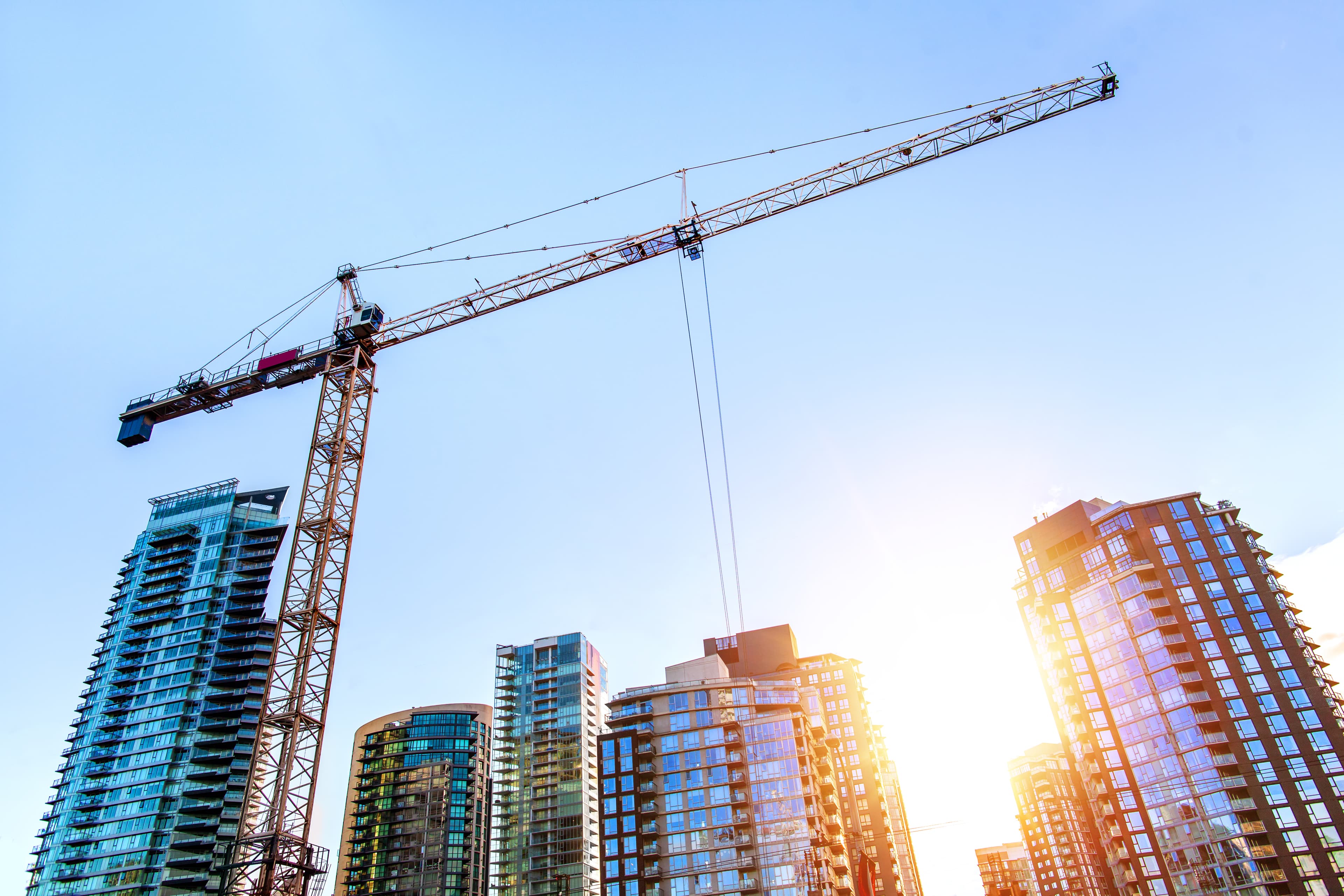Key highlights
Altus Group’s second annual Global Construction Costs webinar is now available to watch
Developers are getting a bit of a reprieve from the painful escalation in construction costs seen in recent years; however, that relief is not evident everywhere
During the webinar, experts from Altus Group’s development advisory team discuss how micro-economic factors, as well as inflation, interest rates and trends around AI and sustainable development practices are influencing the outlook for cost escalation within different regions
Altus Group’s second annual Global Construction Costs webinar delves into factors influencing regional cost escalation
Developers are getting a bit of a reprieve from the painful escalation in construction costs seen in recent years. Stabilizing construction costs across many geographies was one of the common themes discussed in Altus Group’s recent Global Construction Costs webinar.
However, that relief is not evident everywhere, and the rate of cost increases varies widely depending on the local market, property sector, and scale of a project. In addition, the break from soaring costs may be short-lived with significant cost pressures still at play. Experts from Altus Group’s Development Advisory team discuss how micro-economic factors, as well as inflation, interest rates, and trends around AI and sustainable development practices are influencing the outlook for cost escalation within different regions.
“Labor shortages are an issue across the board, and that is going to become more of a challenge as we go into manufacturing and other types of complicated projects,” says Faris Rehman, Director in our Development Advisory team in Houston. Although construction pipelines for some sectors are slowing, increased federal government spending on infrastructure is expected to put more demand on materials and potentially transfer labor from residential projects to those more specialized projects, he adds.
Global trends to watch
The combined effect of cost escalation and stagnating revenues is expected to result in more distressed developments and assets coming to the market.
AI has promise in some areas of the construction industry, particularly in areas where there is an ability to leverage the power of its predictive forecasting. Potentially, AI could be useful in project planning and feasibility analysis.
Regulations, development fees, delays, and taxes are putting more cost pressure on developers, which has a direct impact on the feasibility of projects.
On-going conflicts in the Middle East and Europe remain a major risk factor and potential wild card for the development industry, along with the upcoming US presidential election
Sustainable building practices remain a key topic of conversation in the building industry, with more attention focusing on how to reduce embodied carbon in buildings and building materials.
United States
Construction costs in the US have increased between 25% and 40% since 2020, and it’s unlikely that costs will return to pre-pandemic levels. High inflation appears to be under control, and cost escalation has pulled back to more historical levels of 3.5% to 4%.
“We’ve seen stabilization in the supply chain, which is a big positive improvement. However, we still do have issues across for other sub-trades, in particular electrical and mechanical wherein the lag time still hasn't improved, and that is going to be the trend going forward as well,” says Rehman. Interest rates have dampened the demand side of projects in the pipeline. Developers also are experiencing higher capital costs and tighter liquidity due to regional banks in the US that are under stress.
Outlook: Construction costs overall are more stable, but still rising. Cost increases have dropped back to historic levels in the range of 2 to 6% annually. However, increases will vary depending on the region with lesser escalation in the Midwest, like Chicago and higher levels in hot spots such as Phoenix. Project type also will influence cost increases related to both materials and labor, with higher escalation expected in the heavy industrial and manufacturing sector and gradual return to traditional ranges in the multifamily segment
Canada
Canada’s high population growth is straining its housing capacity and driving up costs. Last year, Canada’s population grew by over 3%, which makes it one of the fastest-growing countries in the world. The Canadian Mortgage and Housing Corporation (CMHC) estimates that the country needs more than 5 million new homes by 2030, which would require tripling its current building rate. “Our housing starts are falling rather than going up, so the problem is severe and getting much worse,” says David Schoonjans, Senior Director in our Development Advisory team in Toronto.
Developers have the desire and expertise to build but are dealing with a glacial pace of approvals and changing regulatory environment around green standards and carbon pricing. Easing some of the bureaucratic hurdles that exist will take considerable time. Studies that Altus has done show that development approval durations have extended in recent years, across most markets. In its 2020 Doing Business report, the World Bank also ranked Canada as the second worst in the OECD for the time component of its “Dealing with construction permits” attribute. “So, we have a lot of work to do and it’s not going to change overnight,” says Schoonjans.
When Altus Group launched its 2024 Canadian Cost Guide in January 2024, it indicated that inflationary pressures, and construction costs have stabilized in Canada. Although that remains generally true, there are some nuances in construction trends. For example, interest rate increases have created bigger challenges to housing construction in Toronto, which was already a very high-cost market. High housing prices have shifted migration and construction activity to more affordable cities such as Calgary.
Mixed outlook: Toronto and Calgary bookend the two extremes in Canada. Looking specifically at high-rise residential, costs in Toronto have been coming down slightly. By the end of 2024, costs may decrease by 2 to 3% from what remains a very high basis. “We do believe that is going to be short-lived because of the pressure from housing shortages,” says Schoonjans. “It’s entirely possible that we'll see 10% cost escalation by 2026.” Calgary is likely to experience cost increases this year due to the in-migration of people moving to the city.
Europe and Australia
Across Europe, prices appear to be stabilizing on materials, while labour issues are continuing to rise. Western states tend to have higher demand and lower labor availability, which is driving bigger increases. Those states that are struggling with high unemployment and low growth, such as Spain and Greece, are experiencing lower levels of cost increases.
In Australia, construction costs are still ticking higher, due primarily to labor costs. According to Altus Group’s latest Australian Construction Materials Price Outlook, Australia's residential construction is failing to keep up with population growth. It is estimated that an additional 450,000 workers are needed to build houses to meet demand in Australia. “The driver is around migration, which is a bit of a double-edged sword,” says Niall McSweeney, President of the Development Advisory team in Sydney. There is a need to bring more people in to fill jobs, while more people also fuels greater demand for affordable housing, he adds.
Outlook: Overheated markets, such as southeast Queensland, and poor participation by delivery partners in the residential sector in New South Wales are causing extremely high levels of price increases. In addition, natural disasters, including flooding from cyclones, is having an impact on markets in the far north of Australia. Flooding will spur more rebuilding activity in areas such as New South Wales, which will further impact availability of materials and labor. Generally, construction costs are likely to rise between 4 and 8%, with some areas and sectors that rise far beyond that 8%.
Conclusion
Globally, a common theme is that the rate of cost escalation is very nuanced due to local and regional factors. As such, it is prudent to talk with a cost consultant about specific locations and projects and not rely on general rate information and forecasts when analyzing construction costs and project feasibility.
Want to be notified of our new and relevant CRE content, articles and events?
Authors

Faris Rehman
Director, Cost & Project Management

Niall McSweeney
Head of Development Advisory, Asia-Pacific
Authors

Faris Rehman
Director, Cost & Project Management

Niall McSweeney
Head of Development Advisory, Asia-Pacific








